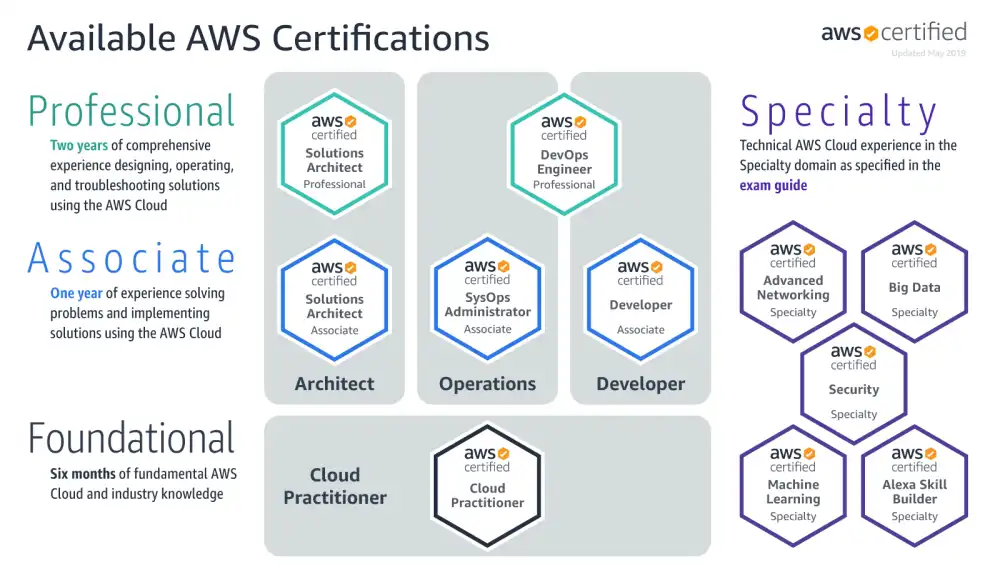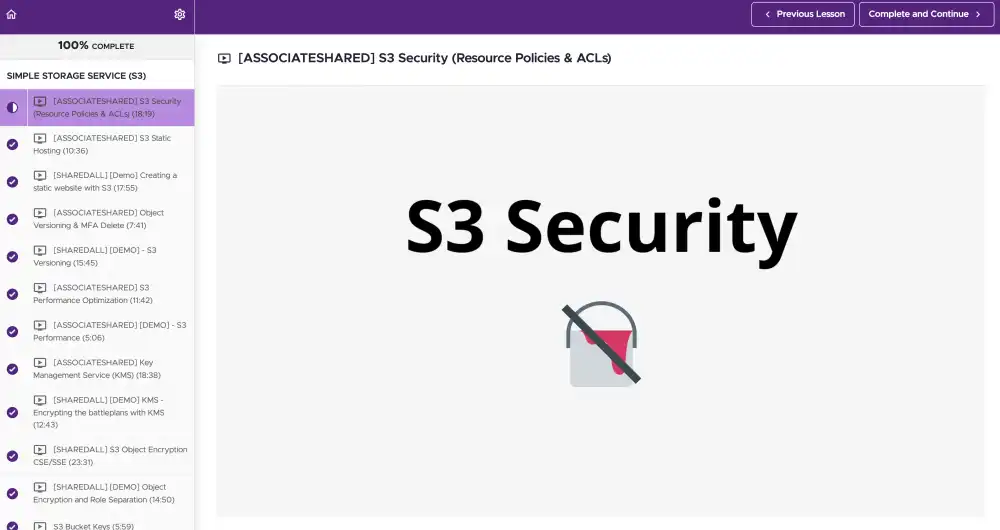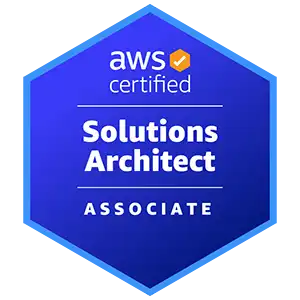I recently completed the AWS Solutions Architect (Associate) Certification, yes…"groovy" I can hear you say, but what the heck is it? Is it useful? And how was the study process? In this post, I’ll walk you through the 6 steps I took to get that beautiful badge and throw in a few useful tips along the way.
Step 1: Understanding AWS certifications
You should hopefully already have an idea of what a certification is and the benefits it can bring. Regarding AWS certifications, they not only give you credibility but give you a wider understanding of the services AWS offer, what use cases fit each service and the best practices to follow when architecting them.
There are a few paths you can take in their certification map (shown below) but we encourage employees to start with AWS Cloud Practitioner. It requires less effort (~10 hours study) and gives you a great overview of AWS and experience in the exam process.
AWS exams and potential paths
Source: AWS Certification T&Cs Overview
AWS are continuously enhancing their exam offerings so there may be more exams available than detailed above so make sure to check out their latest exams here.
Solutions Architect (Associate) sits the level up from Cloud Practitioner. It is certainly a big jump in terms of knowledge and commitment, but provides a much deeper understanding of AWS services. Professional is higher again and is seen as the most difficult of the “role-based” certifications (shown in grey above).
You also have speciality certifications, such as ML and Networking. These should not be taken until after completing a professional level “role-based” certification as they require knowledge from both the professional level and the specialist topic.
A certification lasts 3 years so needs re-certified but if you do a higher level one in the path then it certifies everything below it, yay!
Step 2: Making sure AWS Solutions Architect (Associate) is for you
If you are dipping your toes in or have just started in AWS and want a certification to enhance that knowledge then I’d stop here and just go for the Cloud Practitioner first - it works for developers, testers, designers, management and anyone in between wanting to know more about AWS, the services it provides and how it’s architected at a very high level.
If you have a decent amount of experience working in AWS (> 1 year) and want to really cement that knowledge with a deep understanding of how AWS services are implemented then go Solutions Architect Associate. It’s a big jump from practitioner but really worth the certification (benefitting both you personally and often your company in their AWS partnership).
Here are some key points about the exam which are good to know before we continue:
Estimated time to study: ~110 hours including taking notes, performing demos in a personal AWS account and taking practice exams. This can of course be more or less depending on how well you ingest information but this is how long I felt it took me to feel confident enough to take the exam and pass.
Exam style: 140min closed-book exam (can be proctored from home).
Question style: Multiple-choice & multiple-answer questions (no essays or free text entry).
Marking style: No negative marking so you can take a guess if you really need.
Questions: There are 65 questions in total, although 15 are not counted in your final mark as they are tester questions for future exams set by AWS (but you of course don’t know which ones are marked/not marked, sneaky).
Pass Mark: 720/1000 so they take the 50 marked questions and scale them out of 1000 depending on some difficulty factors.
Price: $150 exam + revision content purchased (Instil kindly covered both the exam cost and any revision content purchased for us which was a great bonus).
Step 3: Pick a course for studying
When studying for the Associate exam you will need:
- A decent course to walk you through the fundamentals
- Time set aside to take course notes and revise
- An AWS sandbox to practice and test out deployments in
- Practice questions and exams to explore the depths of your learning
Personally, I would recommend Adrian Cantrill’s AWS Certified Solutions Architect course - a video-based learning course with guided demos to practice in your own personal AWS account, “end of topic” practice questions and full practice exams.
Example video content + demos from Solutions Architect Associate course
Source: https://learn.cantrill.io/p/aws-certified-solutions-architect-associate-saa-c03
Adrian is a great teacher taking you through 99%+ of the knowledge you need to complete the exam. His course requires no previous knowledge of AWS. Additionally the demos are often 1-click deployments so he spins up a lot of underlying architecture quickly meaning you can just focus on the one topic he is specifically teaching in that demo.
I don’t say 100% because I can’t guarantee he covers every single AWS service that may come up in the exam. It’s important not to fully rely on this course and also do some AWS white paper reading, plenty of practice exams and check the exam specification document to make sure that you have everything covered before taking the exam.
The course also includes a lot of the information on how the actual AWS exam works, the types of questions asked and your best approach to answering. This is incredibly useful if you’ve never done an AWS exam before.
I would recommend completing 100% of this course before attempting the exam. After completing, you can then skim back through what you’ve revised and redo topics if you feel need of a refresh.
Step 4: Practice, practice, practice exams
One of best places to find practice exams is AWS Certified Solution Architect Practice Exams available on the Tutorials Dojo Portal. This comes highly recommended by Adrian and others. It allows you to take the exams in different formats including “Timed Mode”, “Review Mode” (question then answer) and specific topic exams if you are struggling in a particular area.
After doing Adrian’s course I did a lot of these practice exams which really helped clarify what I understood, didn’t know and also gave me confidence in the time I had spent revising. Additionally, if doing the “Review Mode” exam then you are given content from their course with attached videos to then help you understand where you went wrong.
In terms of exam readiness, once completing Adrian’s course I did about 8 of these exams. Adrian recommends hitting 90% in the exams before attempting the real thing which is true but I never hit 90% in any... so it is possible to pass if hitting below 90.
All the practice exams I completed were 'closed book' (with some timed) and I was hitting mostly between 75-85% which gave me the confidence to do the exam. (I had it already booked so didn’t have much choice.) Somewhere around these percentages and above I think is a decent indicator of your knowledge as I’d say the Tutorial Dojo exams are close enough if not slightly harder than the real thing.
Also don’t panic if you get a fail in a practice exam. I failed a couple of practice exams with a big batch of hard questions and certainly panicked which I didn’t need too. If you have given yourself plenty of time before the real exam, use that time to write down the topics you are struggling with (Tutorial’s Dojo kindly tells you) and rewatch some videos before attempting any exams again and trying to consistently hit around that 80% mark.
Step 5: Set yourself up for success
Instil will often have study groups running for specific exams which is really beneficial to the revision process, so perhaps consider starting one in your own company or try finding other people who are also taking the exam and revise with them, ask questions and help each other out in the journey!
Revision Tips:
Allow about 100 to 110 hours to prepare for the exam.
- Complete the course demos: Most of us tend to learn better by doing not just reading. It certainly helps cement the knowledge in your brain. I definitely learned a lot more from using the actual AWS architecture after learning about it, which meant I could more easily recall things during the exam.
- Do your practice exams early: Give yourself plenty of time between finishing the course and doing the real exam to do practice exams or do topic based exams plugging any knowledge gaps you might have.
- Use the course as a revision time guide: The course was reasonably accurate in it’s timing, it contained 80+ hours of content including demos. As I was also pausing videos to write notes, revising over work and completing about 8 practice exams after the course, I put about 110 hours of time into passing the exam. Using the course as a guide and how much time you have per week to revise you can hopefully work out a rough plan on how long it might take you to complete.
- Don’t fully rely on the course: As mentioned, Adrian’s course probably covers 99%+ of what may come up on the exam. It certainly covers the most common questions that require a deeper understanding of particular AWS services, but there’s possibly just a couple of extra services not mentioned which you will want to know the name of at least. Use the exam guide provided by AWS to help you find content which you may have missed and usually it’s just a quick google to put it at the back of your brain in case it comes up.
Exam Tips:
Important: I would highly recommend doing the exam on your personal machine. Make sure notifications are completely silenced and if you have to use a company laptop then make sure that software updates are not being enforced during the exam. This would be disastrous.
- Be well prepared with your exam space: If completing at home then it’s a proctored exam and they are of course strict on what you can and cannot do, including leaving the room, outside noise or even having a pen on your desk. Make sure you test their exam software well in advance and ensure you have a quiet environment in which no one can interrupt you.
- Don’t waste time on the very hard questions: If you do Adrian’s course, he has a few videos on how to tackle the exam regarding easy, medium and hard questions. 140 minutes seems like a lot but with 65 questions you only have about 2 minutes per question to read, understand and answer correctly. He recommends going through all 65 questions quickly first, completing all the instant “I know this” questions, then going back completing medium “I need to consider this” questions and finally using whatever time you have left to consider or guess the hard questions.
- I’d definitely recommend doing the timed practice exams in full exam conditions to practice how quickly you proceed through the exam and whether you’ll have time to go back to flagged questions etc.
Step 6: Go for it! You can do it
I’m obviously going to recommend doing this exam as it not only benefits your personal career in AWS but can help with your employer’s AWS partnership. It may seem like a big undertaking but if you follow these steps and create a good revision plan over a sensible timeline (months not weeks), then by the end you will be ready for the exam.
Then you can then go round telling everyone you are an architect! (Even if it’s just a AWS Solutions Architect…you can leave that extra bit out.)

Yes, I printed out this badge and wear it alongside my Blue Peter badge when attending formal events (if you don’t know what a Blue Peter badge is, shame on you).